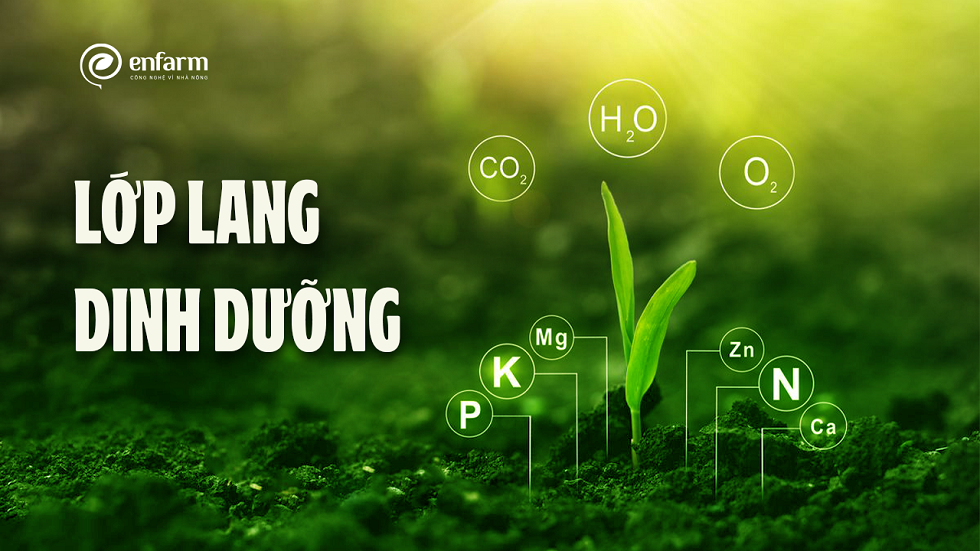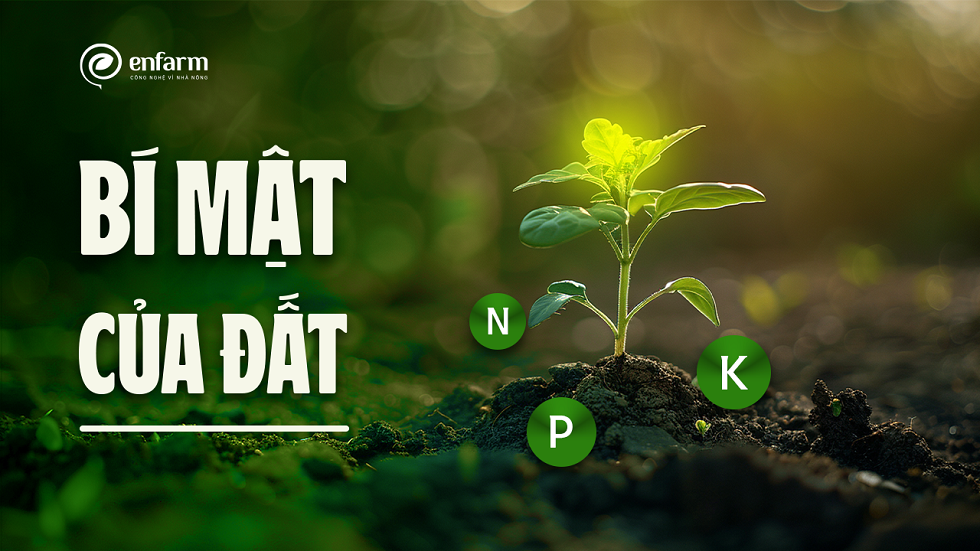Knowledge
The Secret of Soil
Anyone who has read the classic book Zero to One by Peter Thiel will be haunted by the key question posed in his work: “What important truth do very few people agree with you on?” (Answering this question is also answering the fundamental question in entrepreneurship: what valuable company is nobody building yet?).
For us at Enfarm, we face the truth about soil that very few people agree with every day. It is only thanks to the wisdom and persistence of Dr. Long Phi Ho, a soil and water scientist and the father of Enfarm’s technology, that we have not been swayed by opposing opinions.

Some things about soil are no secret: everyone knows that plants absorb nutrients through the soil, more precisely that roots take in the soil solution through tiny capillaries. Therefore, the nutrients that plants truly absorb are those dissolved in the soil solution, which is often a very small fraction. This solubility depends on the “health” of the soil: dry soil prevents nutrient uptake, acidic soil lacks the microorganisms to transform fertilizers and decompose organic matter, and soil structure determines whether nutrients are retained or leached away. The transformation of nutrients in the soil into forms that plants can absorb is a complex multivariable problem that Enfarm addresses using machine learning.
To accurately reflect the nutritional conditions for plants, Enfarm measures the effective nutrients (those dissolved in the soil solution) instead of measuring total nutrients, and it measures the pH of the soil solution rather than the bulk soil pH. The truths Enfarm has uncovered about soil nutrition are very different from conventional assumptions, because most of us base our thinking on calculations with too few variables.

Here are some real stories I encountered on a recent trip to Dak Lak Province, Vietnam, that illustrate the multivariable nature of soil nutrition measurement:
• An experienced farmer, who had been using Enfarm very successfully, asked us why the Enfarm device still showed minimal nutrient levels even after he had applied fertilizer and irrigation. We checked the sensor and it was working fine. Dr. Long Phi Ho explained: during the hot dry season, microbial activity weakens, meaning fertilizers are not transformed in the soil, so available nutrients remain low despite applications.
• An agronomist with a PhD who had trained abroad, enthusiastic about Enfarm’s technology, brought soil and MAP fertilizer (rich in phosphorus) to Enfarm’s store in Buon Ma Thuot for testing. Together we measured before and after application, checking after 5 minutes, 9 minutes, 36 minutes, and 6 hours. After testing, all three nutrients N (nitrogen), P (phosphorus), and K (potassium) increased, but rose evenly, even though MAP is high in phosphorus. The agronomist suspected the Enfarm device could not distinguish NPK. Dr. Long Phi Ho explained: phosphorus is released the slowest of the three nutrients and is mostly found in insoluble compounds in the soil. He had observed cases where phosphorus took up to a month to reach its peak. I later discovered that when water flooded the soil samples in the container, unlike real field conditions, this further locked phosphorus due to ions in the fertilizer being unable to move effectively and precipitating out.
• From this experiment with the agronomist, to be certain that the Enfarm sensor was accurate, I requested another test in the field with potassium fertilizer. The result brought another surprise: from very low nutrient levels, all three nutrients N, P, and K rose after watering, with nitrogen increasing the most and potassium second. It turned out potassium helps balance soil ions, creating favorable conditions for other ions like phosphorus and nitrogen to move and become available for plant uptake. Potassium also helps adjust soil solution pH, which in turn stimulates nitrogen transformation by microorganisms.
These three stories, with farmers and scientists deeply knowledgeable about soil and agriculture, are only the tip of the iceberg of soil’s hidden secrets. For everyday users, simply seeing that nutrient readings do not change after fertilization, or that readings differ from the total amount applied, or that soil solution pH shifts quickly (much faster than bulk soil pH), is enough for them to dismiss Enfarm as unreliable technology.

But the reality is that limited understanding of soil’s secrets has led to 60% of global fertilizer not being absorbed by crops, wasting 120 billion US dollars, degrading one-third of arable land, and generating 5% of global greenhouse gas emissions. That is the massive problem Enfarm is striving to solve. We cannot yet know all the secrets of the soil, but with data from countless sensors across fields, every day we uncover another important truth that few people know.


